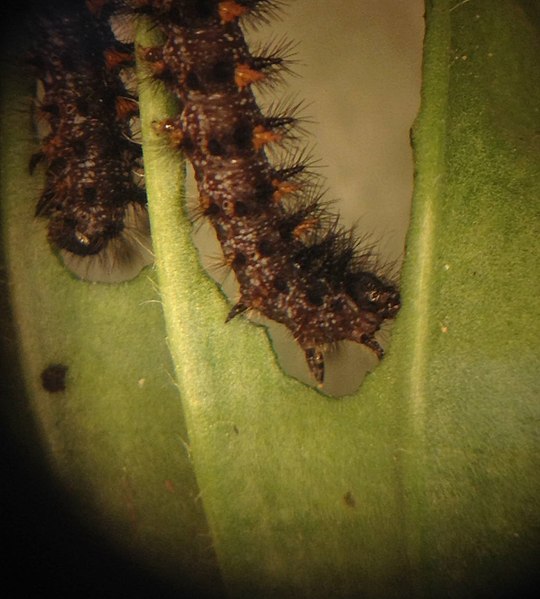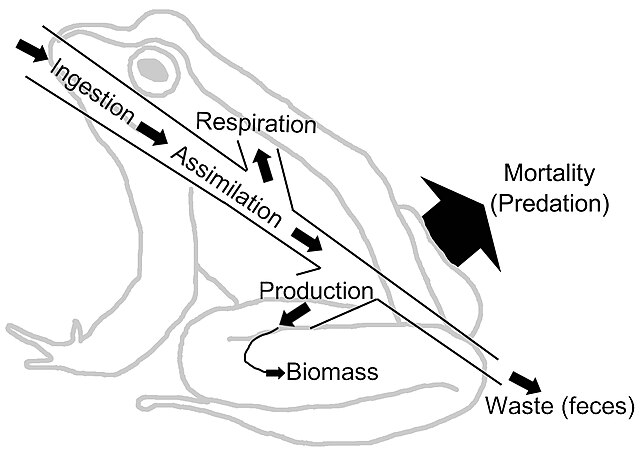The trophic level of an organism is the position it occupies in a food web. A food chain is a succession of organisms that eat other organisms and may, in turn, be eaten themselves. The trophic level of an organism is the number of steps it is from the start of the chain. A food web starts at trophic level 1 with primary producers such as plants, can move to herbivores at level 2, carnivores at level 3 or higher, and typically finish with apex predators at level 4 or 5. The path along the chain can form either a one-way flow or a food "web". Ecological communities with higher biodiversity form more complex trophic paths.
First trophic level. The plants in this image, and the algae and phytoplankton in the lake, are primary producers. They take nutrients from the soil or the water, and manufacture their own food by photosynthesis, using energy from the sun.
Second trophic level Rabbits eat plants at the first trophic level, so they are primary consumers.
Third trophic level Foxes eat rabbits at the second trophic level, so they are secondary consumers.
Fourth trophic level Golden eagles eat foxes at the third trophic level, so they are tertiary consumers.
A food web is the natural interconnection of food chains and a graphical representation of what-eats-what in an ecological community. Ecologists can broadly define all life forms as either autotrophs or heterotrophs, based on their trophic levels, the position that they occupy in the food web. To maintain their bodies, grow, develop, and to reproduce, autotrophs produce organic matter from inorganic substances, including both minerals and gases such as carbon dioxide. These chemical reactions require energy, which mainly comes from the Sun and largely by photosynthesis, although a very small amount comes from bioelectrogenesis in wetlands, and mineral electron donors in hydrothermal vents and hot springs. These trophic levels are not binary, but form a gradient that includes complete autotrophs, which obtain their sole source of carbon from the atmosphere, mixotrophs, which are autotrophic organisms that partially obtain organic matter from sources other than the atmosphere, and complete heterotrophs that must feed to obtain organic matter.

A freshwater aquatic food web. The blue arrows show a complete food chain (algae → daphnia → gizzard shad → largemouth bass → great blue heron)
A trophic pyramid (a) and a simplified community food web (b) illustrating ecological relations among creatures that are typical of a northern Boreal terrestrial ecosystem. The trophic pyramid roughly represents the biomass (usually measured as total dry-weight) at each level. Plants generally have the greatest biomass. Names of trophic categories are shown to the right of the pyramid. Some ecosystems, such as many wetlands, do not organize as a strict pyramid, because aquatic plants are not as productive as long-lived terrestrial plants such as trees. Ecological trophic pyramids are typically one of three kinds: 1) pyramid of numbers, 2) pyramid of biomass, or 3) pyramid of energy.
Multitrophic interaction: Euphydryas editha taylori larvae sequester defensive compounds from specific types of plants they consume to protect themselves from bird predators
Energy flow diagram of a frog. The frog represents a node in an extended food web. The energy ingested is utilized for metabolic processes and transformed into biomass. The energy flow continues on its path if the frog is ingested by predators, parasites, or as a decaying carcass in soil. This energy flow diagram illustrates how energy is lost as it fuels the metabolic process that transform the energy and nutrients into biomass.








